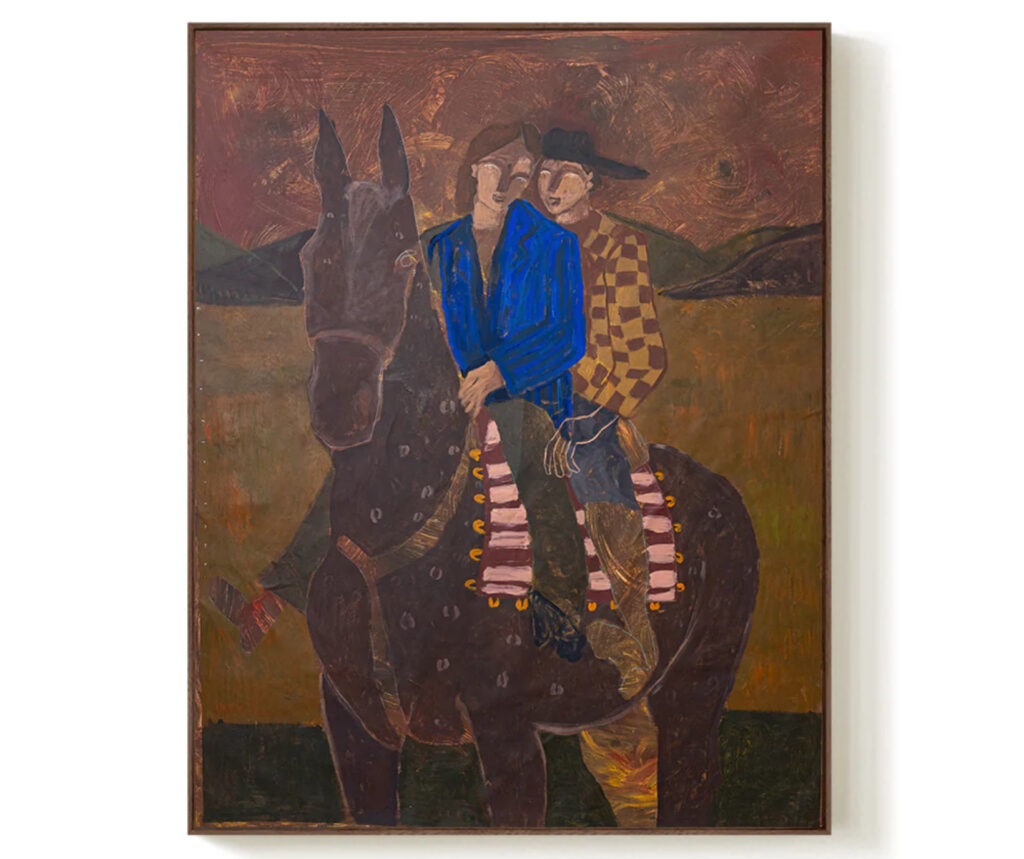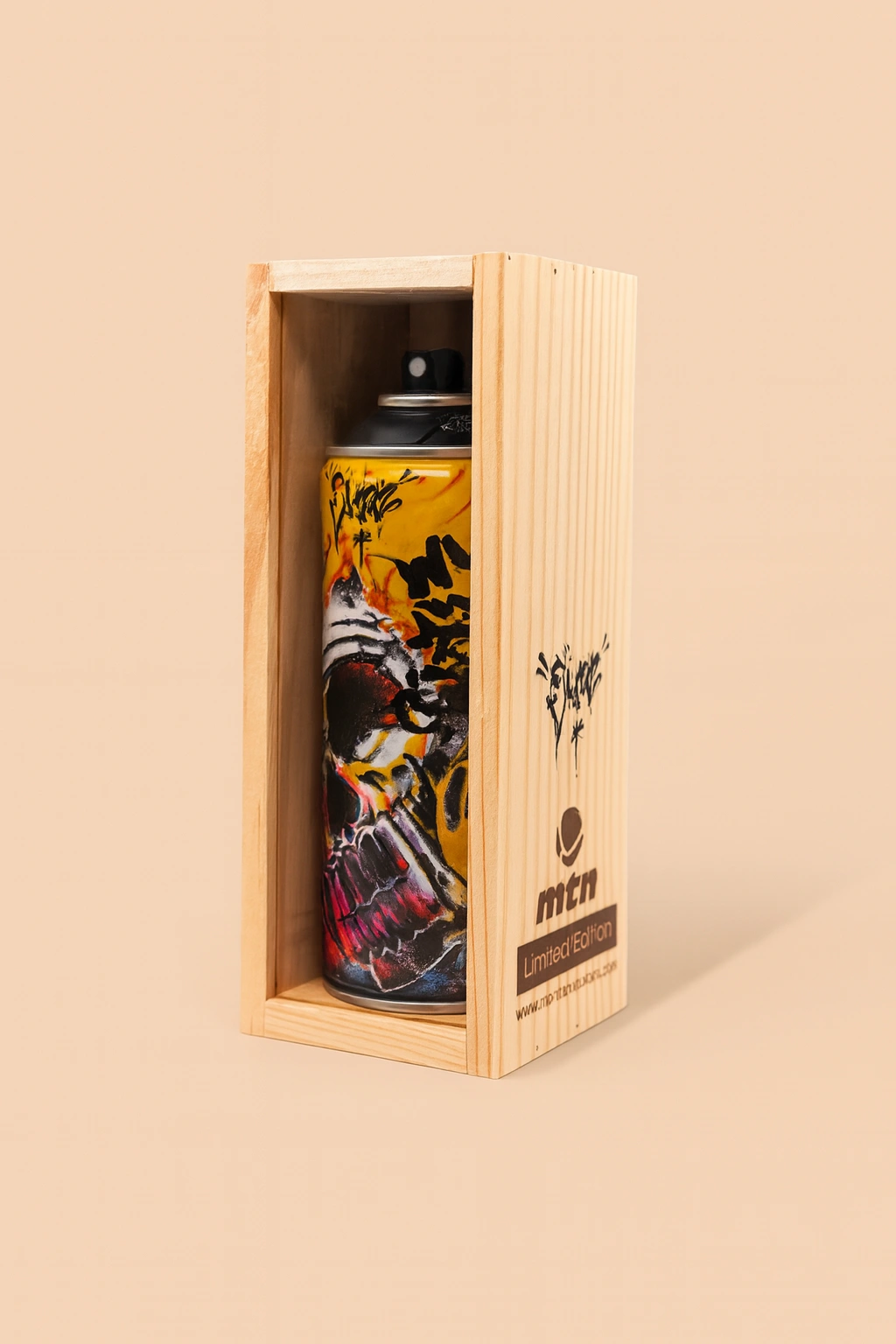In Side by Side, Kate Florence doesn’t just paint a scene—she evokes a world. A world where figures lean into one another with the casual gravity of memory, where the landscape is both vast and intimate, and where the palette of earth tones suggests something lived-in, even ancestral. There’s no obvious plot to her compositions, but they hum with narrative all the same—like half-remembered dreams or the flicker of a song from childhood. At $11,100, the work is priced as a collector’s piece, but its emotional currency runs deeper. It speaks to something timeless: the need to see ourselves in others, and in the land we occupy.
Florence’s artistic language is unmistakably gestural. Acrylic on canvas becomes a choreography of movement—bold, intuitive brushwork that doesn’t refine the human form so much as release it. Bodies are suggested, not delineated. Limbs and faces often blend into surroundings. What remains is an emotional impression, not an anatomical study. In this sense, her work recalls the expressive urgency of postwar painters—De Kooning, perhaps, or Cecily Brown—but with a distinctly grounded, narrative core. These aren’t abstract figures lost in space; they’re rooted in something specific, even if that specificity resists naming.
What Florence captures so effectively is the psychological terrain of the American West—not as geography, but as symbol. Side by Side is steeped in the visual shorthand of that mythology: cowboy hats, horses, dust-toned backgrounds. But this is no clichéd cowboy romanticism. Instead, she gives us a kind of surreal Americana, stripped of heroism and full of haunting tenderness. Her Western figures aren’t mythic archetypes; they’re emotional beings, sketched with reverence and ambiguity. They could be lovers, strangers, kin. Their proximity suggests connection, yet the loose rendering leaves their relationship open-ended.
This tension—between closeness and distance, story and abstraction—is central to Florence’s practice. Her compositions operate like vignettes from an internal cinema: moments of gesture, gaze, or pause that suggest more than they reveal. There is always movement, even in stillness. In Side by Side, the figures lean, as if caught mid-conversation or mid-thought. We do not know what came before or after. We are simply present with them, held in that painterly moment of suspended time.
Color, too, plays a vital narrative role. Florence’s use of warm neutrals—ochre, rust, sienna—is not just a stylistic choice but a sensory one. These tones feel elemental, rooted in dirt, sun, skin, and leather. They ground the dreaminess of the compositions, keeping the surreal anchored in the tactile. There’s a sensuality to these surfaces: not erotic, necessarily, but human, fleshy, alive. Her palette builds atmosphere, but also memory. These are the colors of old photographs, of heat-soaked earth, of worn-out clothing on tired shoulders. They’re nostalgic without sentimentality.
There’s a striking immediacy to Florence’s line work. Her figures are outlined with confidence and freedom, sometimes with a looseness that borders on the spontaneous. It’s a choice that resists perfection in favor of feeling. You sense the artist’s hand here—not hidden, but assertively present. The line becomes a record of attention, tracing how the eye moved across the body, the space, the story. It’s intimate and vulnerable. There is no hiding behind realism; the painting breathes through its incompleteness.
Florence often draws from what she calls a “personal mythology,” yet it resonates far beyond the autobiographical. Her images connect to a broader collective unconscious—particularly around themes of touch, longing, belonging, and identity. In Side by Side, the ambiguity of the figures allows for projection. They could be anyone. They could be us. This openness is part of what gives the work its power. It refuses to pin itself down. It invites interpretation, but not possession.
The concept of the American West as a symbolic landscape is long-standing in art, literature, and cinema. But Florence’s take on it is refreshingly internal. Her West isn’t about manifest destiny or conquest—it’s about emotional topography. It’s about relationships, memory, and interiority. In this way, her work aligns with a newer wave of artists—such as Kenturah Davis, Jenna Gribbon, or even Salman Toor—who complicate figuration by blending it with emotional, psychological, and symbolic registers. Florence, though, carves a unique lane with her painterly boldness and mythic restraint.
There’s also something musical in her approach. The figures in Side by Side almost sway. There’s rhythm in the way they’re positioned, a tempo in the brushwork, a quiet song in the distance. Florence has painted musicians before, and you can feel the echo of music in her compositions. Her brush moves like melody. Her color harmonizes like chords. She paints feeling more than form. That, in itself, is an act of courage in a visual culture that often prizes crispness and clarity.
And yet, Side by Side is anything but vague. It’s direct in its emotional charge. It just doesn’t tell you how to feel. It gives you the space to feel it for yourself. This generosity—combined with her technical command and symbolic nuance—places Florence firmly within the lineage of contemporary artists who understand that storytelling in paint doesn’t always require plot. Sometimes, gesture is enough. Sometimes, a lean of the body, a bend of the arm, says everything.
Kate Florence is not painting the West. She’s painting what the West means. She’s painting the space between people. The quiet intensity of togetherness. The mythic charge of proximity. Side by Side is a painting of companionship, yes, but also of interior duality. Of self and other. Of past and present. Of myth and memory.
In a market saturated with figuration, Florence’s work stands apart not because it shouts, but because it listens. Her paintings feel like conversations—unfinished, ongoing, and deeply human. Side by Side is more than a work of art. It’s an encounter.
No comments yet.








